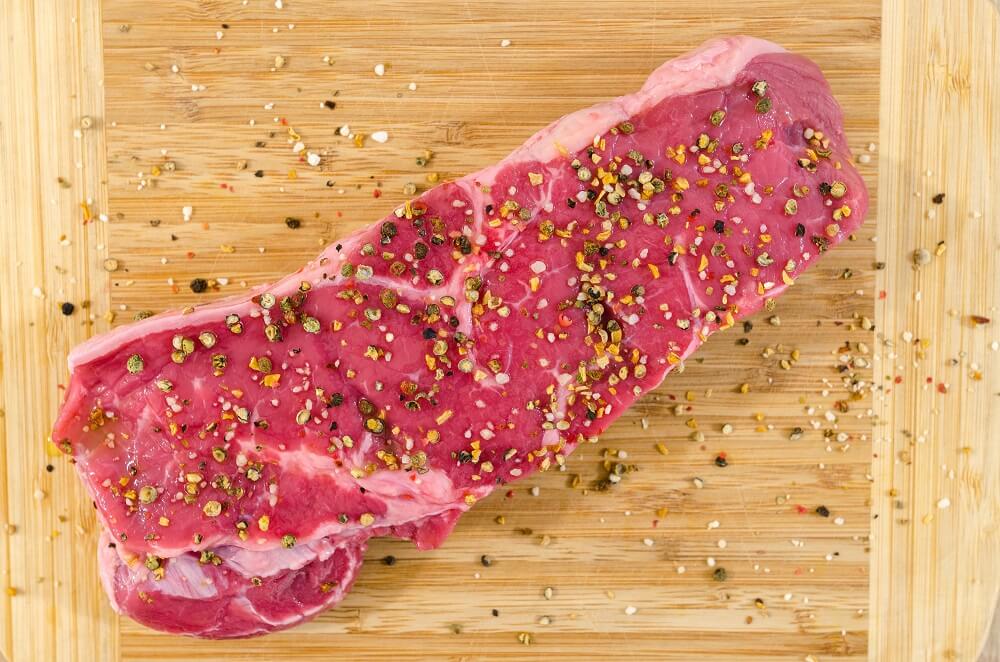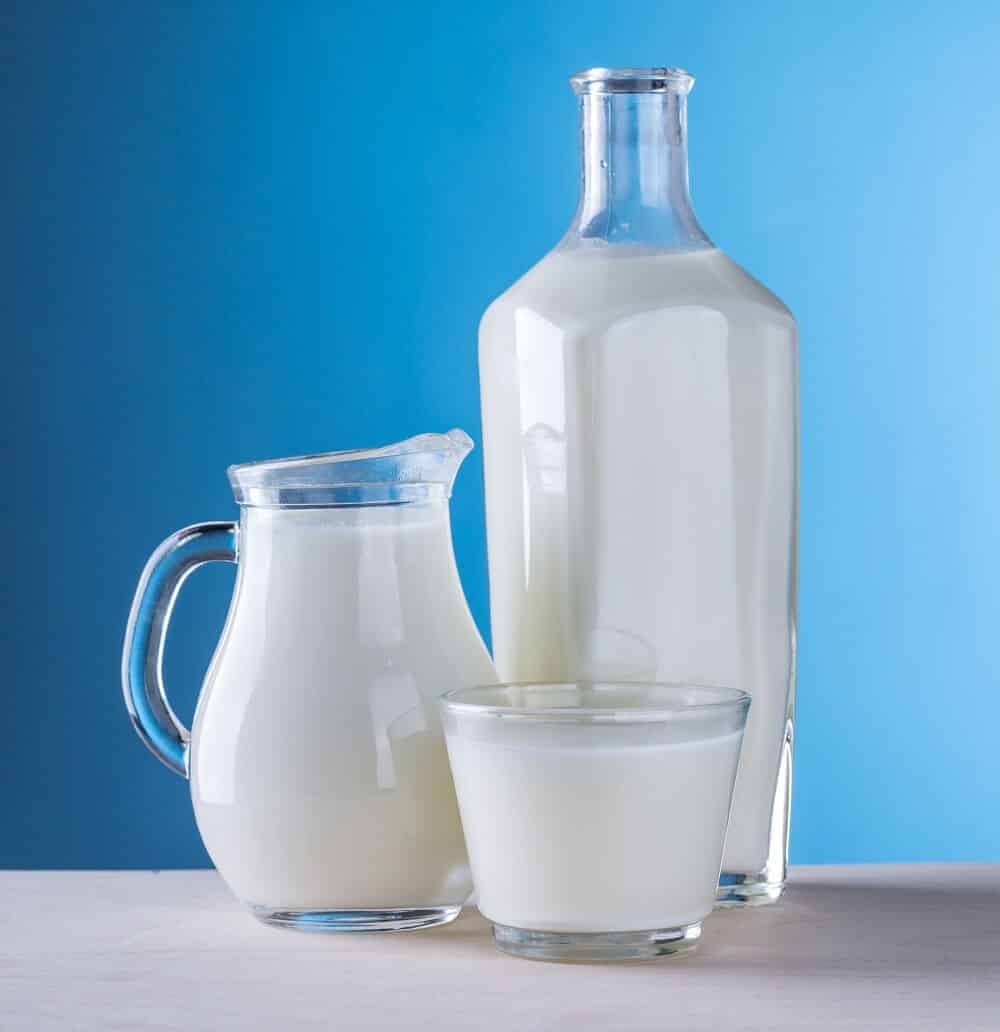Lose weight, increase your performance and build muscles fast.
Accomplish all of these without sacrificing your favorite foods or carefully observing every calorie you eat.
Macronutrients counting or macro counting can help you with all of that. Macro counting concentrates on diet quality, rather than calorie intake. This can decrease the chances of getting health complications and make losing weight easier and faster.
Today, you’ll learn:
- What are macronutrients?
- The role of protein
- The role of carbohydrates
- The role of fats
- How to lose weight: counting macros
- The benefits of macro counting
What are macronutrients?
Macronutrients or macros are essential nutrients your body needs for energy. They are called macros because they are consumed in large amounts. Macronutrients are the primary building blocks of your diet. Your body has three types of macros:
- Protein
- Carbohydrate
- Fat
We couldn’t survive without these macros, because of the lack of energy. However, they don’t provide the same amount of energy for our bodies (1). You can see the energy provided by each one below:
- 1 gram of protein = 4 calories
- 1 gram of carb = 4 calories
- 1 gram of fat = 9 calories
That’s why if you want to lose weight, you should clearly know what you are feeding to your body. When you eat a lot of fat, you accumulate a lot of energy. When you don’t use this energy, it’ll get stored in your body as fat. That’s why most people who eat junk food are fat.
Let’s take a deeper look at those three macronutrients. We’ll start with the first one, which can help you burn fat – protein.
The Role of Protein
Protein is essential for keeping you healthy. Protein provides the building blocks from which your body can grow and repair. It’s not just in your muscles, but also in every cell in your body, from bones to skin and hair.
16% of your body weight is from protein (2). So it’s crucial to have enough of it if you want to be healthy, retain your muscles and lose weight. It can also reduce hunger and boost metabolism, so you can start losing weight more easily (3).
Protein provides you with some essential amino acids, which your body can’t create. There’re also all hormones and other substances such as antibodies created from protein. You must include protein in your diet.
Some of the best protein sources are:
- Meat
- Fish
- Eggs
- Beans
- Nuts
- Grains
- Soy
Let’s now look at the main source of energy – carbohydrates.
The Role of Carbohydrates
Carbohydrates are the main source of energy for your body. They’re essential for your brain function and nervous & immune system. Carbs are the fuel for your body and should make up for 45% – 65% of calories.
There’re three types of carbohydrates:
- Sugar – This is the simplest form of carb. There’re many types of sugar such as fructose (fruit sugar), lactose (milk sugar) and sucrose (table sugar). You can get these sugars from foods like fruits, vegetables, and milk.
- Starch – This type of sugar is complex. It can be found in foods such as potatoes, rice or pasta. Fiber – The last type of carb is fiber. This is also a complex carb. It can be found naturally in fruit, veggies, or whole grains.
Now you may ask: What’s the difference between complex and simple carbs?
- Simple carbs – Simple carbohydrates are sugars. They’re made from small molecules of one or two monosaccharides. You can imagine simple carbs like quick-burning fuel. Your body can break them down extremely fast and they provide you with instant energy. However, any sugar which is not used is converted into fat. You can find simple carbs in foods like dairy products, fruit or certain vegetable.
- Complex carbs – Complex carbohydrates are oligosaccharides and polysaccharides. They’re made from more complex chains of molecules of sugar. Therefore your body takes longer to digest them. However, most of the foods, which contain complex carbs contain also vitamins, minerals, and fiber. They don’t have an immediate impact on blood sugar, which can be beneficial for type 2 diabetes (4). You can find complex carbs in foods like whole grains, beans, starchy vegetables like potatoes.
It’s important to have the right amount of carbohydrates in your diet. Carbs can provide you with many benefits such as:
- More energy
- Better immune system
- Weight control
Let’s look at the last macronutrient – fat.
The Role of Fats
There’re many types of fats. Some are healthy and some can lead to health problems. The fat you get from food is called dietary fat. However, your body can also create its own fat. Usually, it’s created from calories – unused energy.
Fats similarly like carbs provide your body with energy. It’s essential for your body as much as other nutrients. However, there’re also unhealthy fats, which may play a role in cardiovascular diseases (5).
Fat is also high in calories, which may lead to obesity. Excessive fat is bad for your body. Try to balance it out and choose healthy fats instead of unhealthy ones.
There’re many types of fat, these include:
Unhealthy Fats
Unhealthy fats are harmful to your body. They can lead to complications and you should limit their intake. There’re two categories of unhealthy fats:
- Saturated fat – This type of fat can be found in meat, ham, sausage, products from animals and dairy products that can solidify on refrigeration. It increases both your “bad cholesterol” (LDL) and “good cholesterol” (HDL) levels. This may lead to cardiovascular complications (6).
- Trans fat – Trans fats are mostly created from oils through the food processing method in food processing factories. This method is called hydrogenation and creates partially hydrogenated fats. These fats may lead to an increase in LDL (bad cholesterol0 and a decrease in HDL (good cholesterol) (7). This can increase the risk of getting cardiovascular diseases such as heart attacks & strokes.
Healthy Fats
There’re also fats which can be beneficial, these are healthy fats. They are:
- Monosaturated fatty acids – This type of fat can be found in oils such as olive oil. This type of fat can reduce your cholesterol, which decreases the chances of having cardiovascular problems or type 2 diabetes (8).
- Polyunsaturated fatty acids – This type of fat can be found in oils as well as in plant-based foods. It has similar effects like monosaturated fatty acids. It decreases your blood cholesterol which leads to a lower risk of getting type 2 diabetes and cardiovascular disease (9).
- Omega-3 fatty acids – The last type of fat is also polyunsaturated. However, it’s made mainly from omega-3 fatty acids. It can be found in fatty fish and may be beneficial for your health. It decreases the risk of cardiovascular disease such as coronary artery disease (10).
Some fats may help you, while others may harm. It’s important to know which ones to consume so you can avoid complications and decrease the risks of cardiovascular diseases.
Below are a few recommendations about fat intake:
- Try to avoid or minimize trans fat
- Replace saturated fats and unhealthy fats with healthy ones
- Limit unhealthy fats to less than 10% of all calories
You have now fully understood all three macronutrients. Let’s look at how you can leverage this knowledge and lose weight fast.
How to Lose Weight Fast By Counting Macros
Counting calories is simple, however, it takes some time. But everybody can use this method and make losing weight easier and faster. Let’s get to the actual steps.
What are your calorie needs?
If you want to calculate how many calories your body needs, you need to determine two things:
- Resting Energy Expenditure (REE) – how much calories you burn while resting
- Non-resting Energy Expenditure (NREE) – how much calories your burn while you’re not resting
There’re many tools on the internet, which can help you calculate it. These two things – REE & NREE – are determined by age, height, and weight. You can calculate it here.
When you sum these two you get total daily energy expenditure (TDEE). This can tell you how many calories can you eat to lose weight or build muscles. After you get the results, you can go to the next step.
Figure Out Your Macro Ration
You need to find out what works for you. People vary from each other so you need to find out what suits your needs. However, there’re some macronutrients recommendations, these are (11):
- Carbs: 45% – 65% of total calories
- Protein: 10% – 35% of total calories
- Fat: 20% – 35% of total calories
There’re many different diets, which can help you achieve your goals whether it’s weight loss or building muscles. These can be diets such as keto diet where you have very low carb intake, you can learn more about it here.
The most important thing is to try what fits your body and preferences, so you can achieve your goals faster and without any adverse effects upon your health in the long run.
Track Your Macros
This is the last step – tracking your macronutrients.
You want to track the foods you eat through a variety of different apps. These can help you calculate macronutrients from the foods you eat. You can then see if you need to adjust your diet or not.
Some of the most popular apps are: Lose It!, My Macros+ or MyFitnessPal.
Then all you need to do is hit your daily macro goals. There’re also many benefits linked with macronutrients counting. We’ll talk about them in the next section.
The Benefits of Macro Counting
Macronutrients counting can provide you with many benefits. Let’s look at some of them.
Diet Quality
When you concentrate on macro counting rather than calorie intake, you can improve your diet quality.
You may eat foods with similar calorie intake, but they may vary in macronutrient content. An example of this can be a bowl of sugary cereal and a bowl of oats with berries and pumpkin seeds. The calorie intake is similar, but they are different in macronutrient content.
However, some unhealthy foods can fit into your macros. Try to avoid them and stick with healthy foods for the highest diet quality.
Lose Weight Faster
Macro counting can be useful when you want to lose weight. This is because there’re many diets, which can help you lost weight with some macro ratios. For example, certain weight-loss diets promote high-protein or low-carb intake.
With macro counting, you can stick with it easily. Research also says that tracking macros can also help you with long-term weight maintenance.
Reach Your Performance Goals
Counting macronutrients can be also beneficial if you want to achieve fitness goals. It’s essential if you need to consume a specific amount of macronutrient to achieve fitness goals.
These may be things such as building muscles, shredding or boost in performance.
An example of this can be building muscles. Research shows that if you want to build muscles you can consume up to 3.1 grams of protein per kg of your bodyweight (12).
Macronutrient counting can help you effectively achieve these goals and needs.
Final Thoughts
Knowing your macronutrients and counting them may bring you many benefits. It’s great for achieving your weight loss goals, but it can also help you with building muscles and performance.
It’s a lot better than just counting calories because you concentrate more on the quality of diet rather than calorie intake. However, keep in mind that calorie intake is very important.
If you want to lose weight you must make sure that your calorie intake is lower than calories burned.
But, be careful. Macro counting isn’t for everyone. If you have a history of eating disorders, you probably shouldn’t do it. This is because you put so much emphasis on counting your calories and macros, which can eventually lead you back to eating disorders.
Counting macronutrients can be a difficult and overwhelming task to do at the beginning. It can be hard to change your food choices and eat healthy while tracking your macros. But don’t worry…
We are here to help you!
Become part of the thousands of happy customers and start living your life to its fullest potential. Lose weight, build muscles and accomplish all your needs while staying safe and healthy.
Changing your diet isn’t an easy task to do. There are many pitfalls. You need to be very careful and if you mess it up, you may worsen your health.
However, with our professional nutritionist experts and doctors, you’re sure to accomplish all your goals without complications.
Awarded as the best diet and nutrition clinic in Punjab and the only diet & wellness clinic with an internationally certified combo of nutritionists and doctors you know exactly what you’re getting yourself into.
We’ll start by a one-time consultation, where we find out about your food preferences, needs, and goals. Then we discuss solutions, create a diet plan so you can start working towards your goals immediately.
Every week, we’ll check up on you. We’ll see how you’re doing and make the necessary changes to increase your progress even more.
Then you’re ready to take on the journey towards your goals. Whether it’s losing weight, building muscles or better performance you can achieve all of them. A better life is waiting for you, you’re just a few clicks away.
Click here to lose weight, build muscles and improve your life today.
Get a free health evaluation by clicking on the link below and send your health information to us to see how we can help you achieve your health goals.
www.livelifemore.com/health-evaluation
Sources
Total Macronutrient Intake, Energy Expenditure, and Net Energy Stores
https://www.ncbi.nlm.nih.gov/books/NBK218769/
Human nutrition
https://www.britannica.com/science/human-nutrition
Inadequate Dietary Protein Increases Hunger and Desire to Eat in Younger and Older Men
https://www.ncbi.nlm.nih.gov/pmc/articles/PMC2259459/
Simple versus complex carbohydrate use in the diabetic diet
https://www.ncbi.nlm.nih.gov/pubmed/2992551
Saturated Fatty Acids and Cardiovascular Disease: Replacements for Saturated Fat to Reduce Cardiovascular Risk
https://www.ncbi.nlm.nih.gov/pmc/articles/PMC5492032/
Saturated Fat: Part of a Healthy Diet.
https://www.ncbi.nlm.nih.gov/pubmed/30084105
Industrial Trans Fatty Acid and Serum Cholesterol: The Allowable Dietary Level
https://www.ncbi.nlm.nih.gov/pmc/articles/PMC5603143/
High-monounsaturated-fat diets for patients with diabetes mellitus: a meta-analysis.
https://www.ncbi.nlm.nih.gov/pubmed/9497173
Polyunsaturated Fatty Acids and Glycemic Control in Type 2 Diabetes
https://www.ncbi.nlm.nih.gov/pmc/articles/PMC6566834/
Omega-3 Fatty Acids and Cardiovascular Disease: Are There Benefits?
https://www.ncbi.nlm.nih.gov/pmc/articles/PMC5067287/
New dietary reference intakes for macronutrients and fibre
https://www.ncbi.nlm.nih.gov/pmc/articles/PMC1479724/
International Society of Sports Nutrition Position Stand: protein and exercise.
https://www.ncbi.nlm.nih.gov/pubmed/28642676










